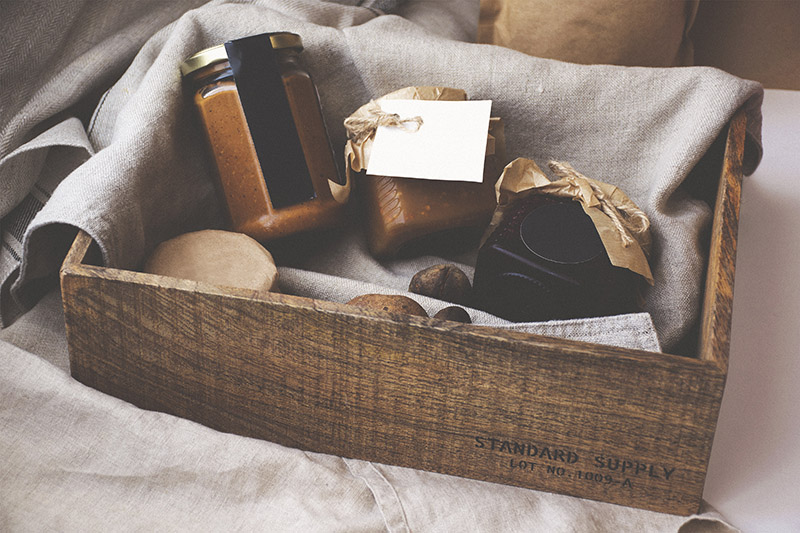Prison brings a lot of financial stress.
The list of expenses can go on forever – attorneys, gas for visits, food for visits, phone calls, emails, letters, food and sundry boxes. Whew! That is a lot of extra spending for anyone, but especially for us families left with only one income while our husbands are in prison.
Most institutions allow you to either put money on your husband’s account or purchase items through an approved vendor and sent to your husband. This sounds simple, but it is often complicated and expensive!
There are so many rules about what they can receive; size limits, types of food, containers, colors of clothing, number of items they can have in their possession, how often they can get boxes, and how many boxes they can receive per year. It can get so confusing.
There is so much to know about buying/shipping a box to your husband that I could write a book about it. Instead of getting frustrated or angry, let’s focus on renewing monthly budgets.
Saving for a food box
What I want to talk about is how to save money for all the stuff you are going to want/need to send to your husband. The struggle to pay for food and sundry (everything that is not food) boxes is REAL. It does not matter if you are shopping or sending him money. It is an added expense that you have to plan for.
The first few boxes I got for Ron really put me in a financial bind. I wasn’t making much, I could barely support myself and our sons. Adding things for Ron was really tough. Looking at the list of things he was asking for was overwhelming. I remember thinking, “how in the world am I going to afford all of this?”
I decided to talk to Ron about his list. We figured out what he needed now and what could wait for the next box. Talking with Ron really helped.
It was the start of our chats about money and our budget. Since then, we both are involved when it comes to creating a budget.

Working together as a team
Learning how to have a disagreement without arguing took work, but totally worth it. Talking about finances helps keep us on the same page. It also led to conversations about priorities and our dreams for our family legacy.
Even after reducing the list for those first couple of boxes, it was still a hardship for us. Telling Ron “we’ll see what I can afford” was not going to work. I needed a plan to stay focused and on budget.
I realized I could not afford to buy the things Ron needed if I didn’t prepare for them. We decided to set a limit on the cost of each box. We set a $100 limit for food, and a $150 limit for a sundry box. That might not seem like a lot, but that was a LOT of money for me to save for a total of 4 boxes per year on my extremely limited, overstretched income.
Challenges are part of being a family
We knew we needed a plan so that Ron could be cared for in a way that didn’t create such a financial strain. I have to say that some have the opinion that we should not have sent him anything since times were so tough and his basic needs were met.
However, I felt strongly that this was important in keeping our family strong and together. We all needed to understand that family members accept inconvenience and make sacrifices for each other. Challenges are part of being a family.
If the shoe was on the other foot, I would want snacks, food I liked, extra pairs of socks and underwear, etc. So why not do my best to make sure my husband had those things?

Staying Committed
I committed to doing my best to send him what he needed. I began to set aside $50 per month. Which was a little more than I needed to meet my goal for the boxes. That gave me an extra $100 each year that I could put on his books for any special treats.
I would put cash in an envelope every month. Once I reached $50 I would move that into the larger envelope and start over for the next month. It became my “Investment in Us” envelope.
Going the distance.
Every time I had an urge to make a purchase, I would ask myself if what I was about to buy was more important, or needed more, than my Investment in Us. Most of the time it was not. If it was a repair, a school fee, or another pressing expense, I paid that first and then went back to saving in my envelopes. Otherwise, I learned to walk away.
There were some months that I could save more than others. Which helped with months I couldn’t quite get to $50. I never let 2 months go by without at least meeting my goal. This is really important because if you get too far behind in your Investment in Us fund, you will begin to get stressed and will have trouble meeting your annual goal.
Investing in your future
Saving for boxes for Ron created the foundation for us to make investing in our family a priority. Now that Ron is home, we still include Investment In Us in our monthly budget so we can have date nights
If you are struggling to make ends meet and feeling resentful about sending money, food, or other items to your husband, DON’T DO IT. Take time to work on growing closer together in your relationship. Then, talk with him about your financial situation. Brainstorm ideas on how you can support each other in the midst of this prison experience.
Three steps to create a budget:
- Look at your budget together and decide how much can be set aside to send packages to your husband.
- Write out your plan.
- Each month review how you did. Once you have it in writing, your goals become so much clearer.
Remember, you are not just buying stuff and food—you are investing in your family’s future.
I am rooting for you!
Cathy


